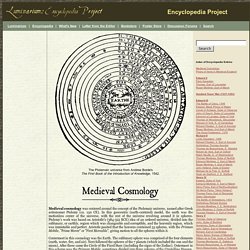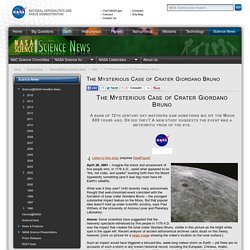

Clouds seen circling supermassive black holes. (Press-News.org) Astronomers see huge clouds of gas orbiting supermassive black holes at the centers of galaxies.

Once thought to be a relatively uniform, fog-like ring, the accreting matter instead forms clumps dense enough to intermittently dim the intense radiation blazing forth as these enormous objects condense and consume matter, they report in a paper to be published in the Monthly Notices of the Royal Astronomical Society, available online now. Video depicting the swirling clouds is posted to YouTube Evidence for the clouds comes from records collected over 16 years by NASA's Rossi X-ray Timing Explorer, a satellite in low-earth orbit equipped with instruments that measured variations in X-ray sources.
Those sources include active galactic nuclei, brilliantly luminous objects powered by supermassive black holes as they gather and condense huge quantities of dust and gas. Computer chips keep getting faster because transistors keep getting smaller. Life is full of decisions. Astronomy & time. Astronomy & time. Zodiac Man: Man as Microcosm in the Medieval Worldview [Homo Signorum; Medieval Medicine and Astrology; Microcosmic Man] Zodiac Man; or, Homo signorum, c1486.Zodiac Man: Man as Microcosm.
![Zodiac Man: Man as Microcosm in the Medieval Worldview [Homo Signorum; Medieval Medicine and Astrology; Microcosmic Man]](http://cdn.pearltrees.com/s/pic/th/microcosm-microcosmic-105014186)
Encyclopedia: Medieval Cosmology and Worldview. Medieval cosmology was centered around the concept of the Ptolemaic universe, named after Greek astronomer Ptolemy (ca. 150 CE).

In this geocentric (earth-centered) model, the earth was the motionless center of the universe, with the rest of the universe revolving around it in spheres. Ptolemy's work was based on Aristotle's (384-322 BCE) idea of an ordered universe, divided into the sublunary, or earthly, region which was changeable and corruptible, and the heavenly region, which was immutable and perfect. Aristotle posited that the heavens contained 55 spheres, with the Primum Mobile, "Prime Mover" or "First Moveable", giving motion to all the spheres within it. Centermost in this cosmology was the Earth. The sublunary sphere was comprised of the four elements (earth, water, fire, and air). Ana Montiel - Here / Now: Solstices, Eclipses and Vintage Astronomy. I'm pretty excited about today's Winter solstice, full moon and total eclipse...

We'll be celebrating that the days will be longer little by little from now on :) Estoy emocionada con el solsticio de invierno de hoy que coincide con luna llena y eclipse total de luna. Celebraremos que los días cada vez irán siendo más largos poco a poco y que el calorcito irá llegando :) Las fotos de este post las he tomado prestadas del grupo de Flickr "Vintage Science".
UH AllSky Cameras - Latest Image (Hemel) View All Reports of Aurora Observations. 1977Metic..12...21N Page 21. The Star of Bethlehem: An Astronomer's View - Mark R. Kidger. Astronomical Enigmas: Life on Mars, the Star of Bethlehem, and Other Milky ... - Mark Kidger. What the monks really saw. Comet impact?

The bright-rayed moon crater Giordano Bruno. Wham! You're peacefully enjoying a lovely view of a thin crescent low in the western sky with a few mates on a summer evening, and suddenly, something totally unexpected happens to the moon. The Mysterious Case of Crater Giordano Bruno. A band of 12th century sky watchers saw something big hit the Moon 800 years ago.

Or did they? A new study suggests the event was a meteoritic trick of the eye. Listen to this story (requires RealPlayer) April 26, 2001 -- Imagine the shock and amazement of five people who, in 1178 A.D., spied what appeared to be "fire, hot coals, and sparks" bursting forth from the Moon! Apparently something (and it was big) must have hit Earth's satellite. What was it they saw? Above: Some scientists have suggested that the heavenly spectacle witnessed by five people in 1178 A.D. was the impact that created the lunar crater Giordano Bruno, visible in this picture as the bright white spot in the upper left. Such an impact would have triggered a blizzard-like, week-long meteor storm on Earth -- yet there are no accounts of such a storm in any known historical record, including the European, Chinese, Arabic, Japanese and Korean astronomical archives.
Web Links. Canterbury monks witness creation of moon crater. Mathematical Model Of Medieval Cosmology Produces The Same Conundrums Modern Cosmologists Face — The Physics arXiv Blog. Robert Grosseteste was an English philosopher, theologian and statesman during the early 13th century.

He is also thought of by some scholars as the first truly scientific thinker and an important contributor to the development of the scientific method. The reason for this high praise is Grosseteste’s treatise on light, De Luce, which he probably wrote around 1225. In it, he describes a cosmological model in which the universe begins with an explosion of light from which matter condenses. The entire universe then forms in nine nested spheres as a result of the coupling between matter and light. The similarities between Grosseteste’s model and today’s ideas about cosmology are one reason he is so admired. It certainly true that modern cosmologies aren’t so different in some ways from Grosseteste’s.
But they also have a powerful additional tool at their disposal: mathematics. The expansion eventually stops when matter reaches a minimum density. Stonehenge - Wiltshire, England.